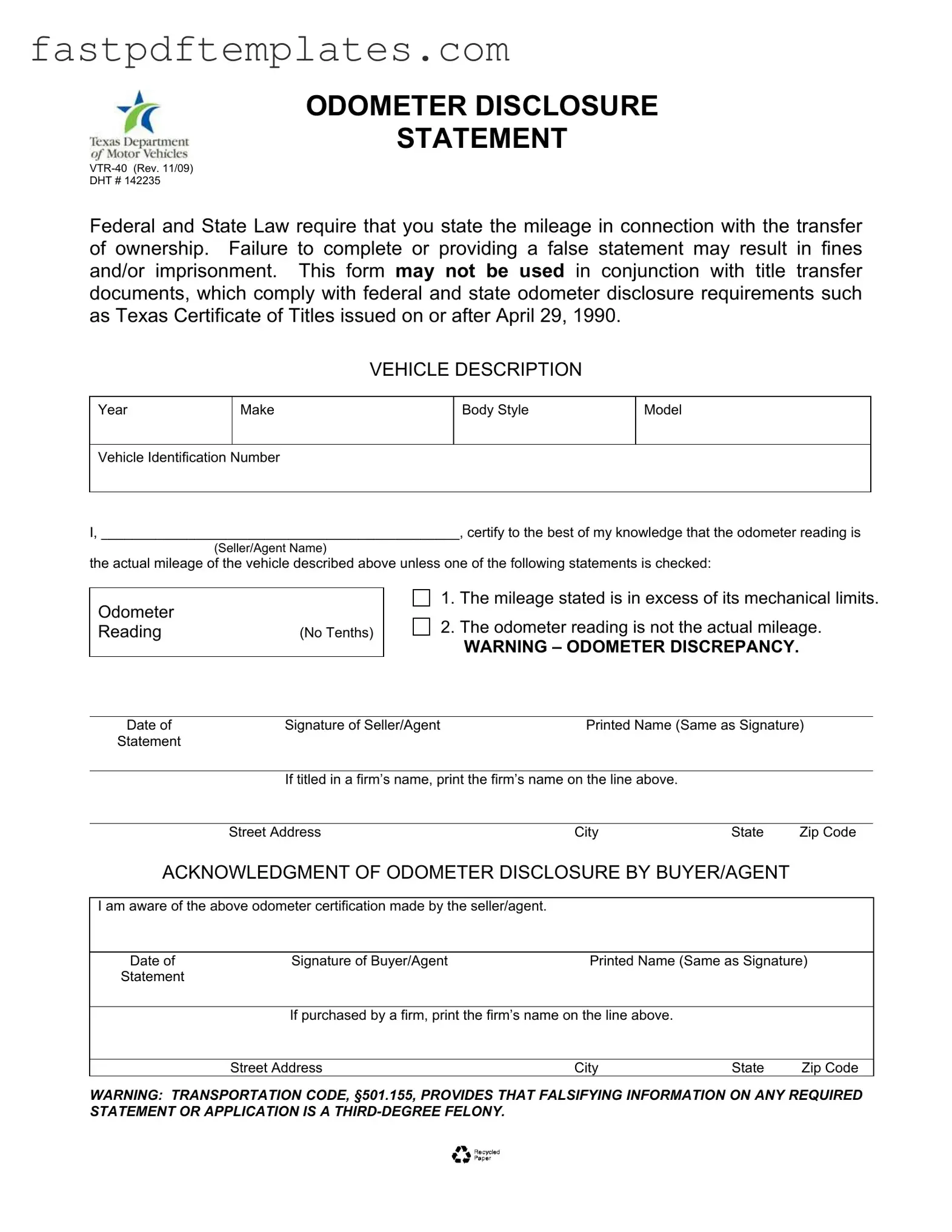The Vehicle Title Application form is similar to the Texas Odometer Statement in that both documents are essential for the transfer of vehicle ownership. When applying for a title, the Vehicle Title Application requires the seller to provide details about the vehicle, including its identification number and the odometer reading. This ensures that the new owner receives accurate information about the vehicle's history. Both forms aim to protect buyers by promoting transparency and preventing fraud in vehicle transactions.
The Bill of Sale serves a similar purpose as the Texas Odometer Statement by documenting the sale of a vehicle. This document includes important information such as the buyer's and seller's names, the vehicle's details, and the sale price. While the Bill of Sale does not specifically focus on odometer readings, it often includes a section for the seller to certify the odometer reading at the time of sale. This helps establish a legal record of the transaction and can be used in case of disputes.
The Title Transfer form is another document that shares similarities with the Texas Odometer Statement. When transferring a vehicle title, both documents require the seller to disclose the odometer reading to the buyer. This is crucial for ensuring that the buyer is aware of the vehicle's mileage, which can affect its value and condition. The Title Transfer form also serves as an official record of ownership change, reinforcing the importance of accurate odometer disclosures.
The Application for Duplicate Title is comparable to the Texas Odometer Statement in that it may require odometer disclosure when a vehicle title is lost or damaged. When applying for a duplicate title, the owner must often provide the current odometer reading to ensure that the vehicle's history is accurately represented. This helps maintain the integrity of vehicle records and prevents fraudulent claims regarding ownership and mileage.
The Vehicle Registration Renewal form also shares a connection with the Texas Odometer Statement. During the renewal process, vehicle owners may need to provide the current odometer reading to ensure compliance with state regulations. This requirement helps keep the vehicle's registration information up to date and can assist in identifying any discrepancies in mileage that may arise during the vehicle's life.
The Affidavit of Odometer Reading is another document that closely resembles the Texas Odometer Statement. This affidavit is often used when there is uncertainty about the accuracy of the odometer reading or when a vehicle is sold without a title. The seller must provide a sworn statement regarding the mileage, similar to the certification found in the Texas Odometer Statement. This document serves as a legal declaration, helping to protect both the buyer and seller in the transaction.
The Odometer Disclosure Statement for Non-Titled Vehicles is similar in function to the Texas Odometer Statement, particularly for vehicles that do not have a title, such as trailers or certain off-road vehicles. This document serves to disclose the odometer reading at the time of sale, ensuring that the buyer is informed about the vehicle's mileage. Like the Texas Odometer Statement, it helps prevent fraud and provides a clear record of the transaction.
Finally, the Vehicle History Report is related to the Texas Odometer Statement in that it often includes odometer readings as part of its comprehensive overview of a vehicle's past. While not a legal document required for ownership transfer, it provides valuable information about the vehicle's mileage history, including any discrepancies or reported issues. Buyers often use this report to verify the accuracy of the odometer reading disclosed by the seller, reinforcing the importance of transparency in vehicle transactions.

